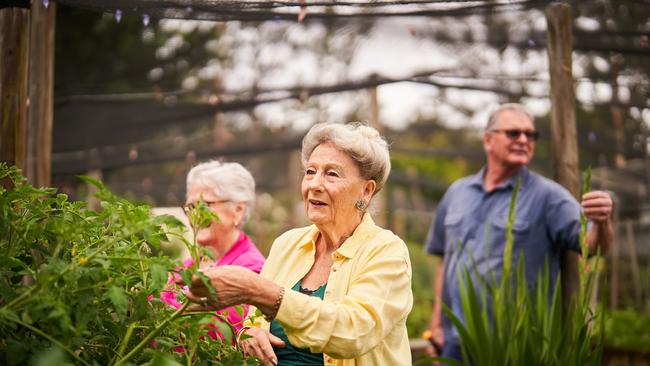Social connections and vibrancy of village ensure an enjoyable life
The facilities in the larger villages such as the pools and community centres help drive social connection. the challenge for retirement villages is maintaining that connection.

The world is suffering from a loneliness epidemic, according to the World Health Organisation, and while the epidemic is spread across all age groups, one in four older people is experiencing social isolation.
According to WHO director-general Tedros Adhanom Ghebreyesus, high rates of social isolation and loneliness around the world have serious consequences for health and wellbeing.
“People without enough strong social connections are at higher risk of stroke, anxiety, dementia, depression, suicide and more,” Ghebreyesus said at the launch of the WHO’s Commission on Social Connection.
More alarmingly, the WHO reports that a lack of social connection carries an equivalent, or even greater, risk of early death as other better-known risk factors – such as smoking, excessive drinking, physical inactivity and obesity.
Bearing this in mind, participants at the recent Housing, Health and Happiness roundtable hosted by Keyton spoke of ways to combat loneliness and highlighted the social connectivity that comes with living in a retirement community.
John Ward, co-founder of the Hunter Ageing Alliance and NSW Senior Australian of the Year for 2024, said when you ask older people how they want to live they always say, “we want to live within our social network”.
“We want to live close to the facilities we use, like doctors, shops, public transport and libraries,” Ward said.
He acknowledges that retirement villages are attractive for a lot of people and all the facilities – swimming pools and lawn bowls greens – do look good in the brochures, but a lot of older people he speaks with aren’t interested in the recreational assets in a village.
“The most important factor in terms of housing and also reducing a person’s sense of loneliness is relationships,” he said. “Almost all older people have their life worked out. They paint, they play the piano, they read, they do Sudoku, they go out and have coffee with their mates, and all of that revolves around companionship.
“And that can even be in a tiny little village of, say, eight to 10 people, as long as there are some community facilities where people can come together.”
For Keyton chief executive Nathan Cockerill, the facilities in the larger villages such as the pools and community centres help drive social connection. He said the challenge for retirement villages was maintaining that connection. “As residents age in a village, they tend to want to stay at home more, and that social connectivity dwindles. They’re not going to the community centre, so the key is to find the right balance. One way is to keep bringing new people into the village, so the vibrancy of the village is maintained,” Cockerill said.
Another option is co-locating retirement villages with aged care facilities so people can move seamlessly from one to the other as well as near universities and urban hubs to create opportunities for more intergenerational connections. Yet, as roundtable participant and Keyton’s head of resident operations Tamara Rasmussen, pointed out, people don’t want to move into aged care.
“People want to stay in independent living for as long as possible and get their services delivered, so the challenge is creating vibrant connected communities with a mixed generational cohort of residents,” Rasmussen said.
Intergenerational Learning Australia founder Greg Cronan suggested that educational institutions should also be co-located near aged care. Cronan’s organisation develops and implements intergenerational learning and wellbeing programs for aged-care organisations and schools.
He said the Australian Institute for Intergenerational Practice had been looking at the benefits of co-locating interactions. “That could be early childhood centres and schools adjacent to retirement living as well as aged care,” Cronan said.
For Keyton’s Rasmussen, the benefits are real, as “we can see the benefits of bringing young people into retirement living both mentally and physically for both younger people and also senior Australians”.
Cronan said: “While that provides an intergenerational learning aspect, especially for the schoolchildren, another aspect would be to co-locate with TAFEs or universities and tap into the lifelong learning aspect for retirees.”
All participants agreed that co-locating intergenerational facilities fostered more connectivity, and this was reflected in Keyton’s recently approved plans to develop a Health and Wellbeing Precinct at the University of Wollongong.
When complete, the precinct will include a residential aged-care facility co-located with an early childcare facility, independent seniors living apartments (to be operated by Keyton).
For Cockerill, this project places “the independent living community within the precinct, that will allow residents to age in place surrounded by a landscape that supports a healthy and active lifestyle”.
-
This content was produced in association with Keyton. Read our policy on commercial content here.
-


